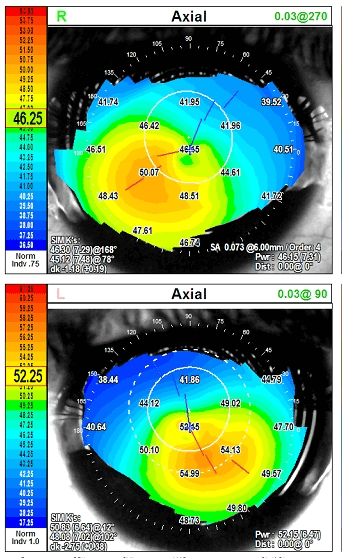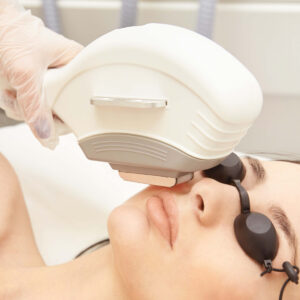Keratoconus is a disease marked by a progressive corneal thinning which can lead to distorted vision. Traditional treatment for keratconus includes glasses until not tolerated, corneal gas permeable contact lenses, and eventually corneal transplant. Newer treatments include scleral contact lenses and corneal crosslinking.

Is My Keratoconus Going to Get Worse?
Most people who find out they have keratoconus get pretty worried when they learn that keratoconus can get worse over time.
In the past, our only options as doctors were to hope for the best and treat the disease as it advance. Some people stay stable for years and can just wear glasses. Others need rigid contacts but do very well for a long time. Still others end up with scarring that requires a transplant.
Waiting and wondering if your eyes will change or not is not fun.
What is Corneal Crosslinking?
Corneal crosslinking is a new treatment which uses medicine and a special UV light to strengthen the cornea.
During the crosslinking procedure, the cornea is soaked with a solution of ribovlavin — one of the B vitamins you probably saw listed on the back of a cereal box as a kid. A light source of a specific wavelength of UV light is then exposed to the cornea. This creates a chemical reaction that strengthens the bonds between collagen layers in the cornea, which results in a stiffer, stronger, cornea no longer as likely to become thin and distorted.
Finally, we have an option to slow or stop keratoconus from progressing!
How is Keratoconus Detected?
Keratoconus is best detected using a device called a corneal topographer. In the example shown in this post, the red areas show were the cornea is a lot steeper than in the blue areas. Keratoconus is confirmed by a thickness map also called a pachymetry map.
(Word Trivia: Pachyderm — a name for elephant — means thick skin. Pachymetry means thickness measurment.)
How Has Corneal Crosslinking Changed the Treatment of Keratoconus?
When we detect keratoconus early, we now have a way to stop the disease before it gets to the point where a transplant, or maybe even sleral contact lenses are needed. As with most eye diseases, the earlier we detect and treat keratoconus, the better the long term outcomes.
Annual eye exams which include corneal topgraphy, such as the exams offered at Progressive Eye Care in South Jordan are recommended for everyone, especially if keratoconus runs in the family.
Some surgeon’s are so confident in corneal crosslinking’s lasting effects that some patients with early keratoconus can now be considered for PRK refractive surgery after crosslinking.
How to Schedule a Keratoconus Consultation:
If you, or a loved one has keratoconus, click here to schedule a visit with one of our doctors. We will be pleased to help you explore your options.



